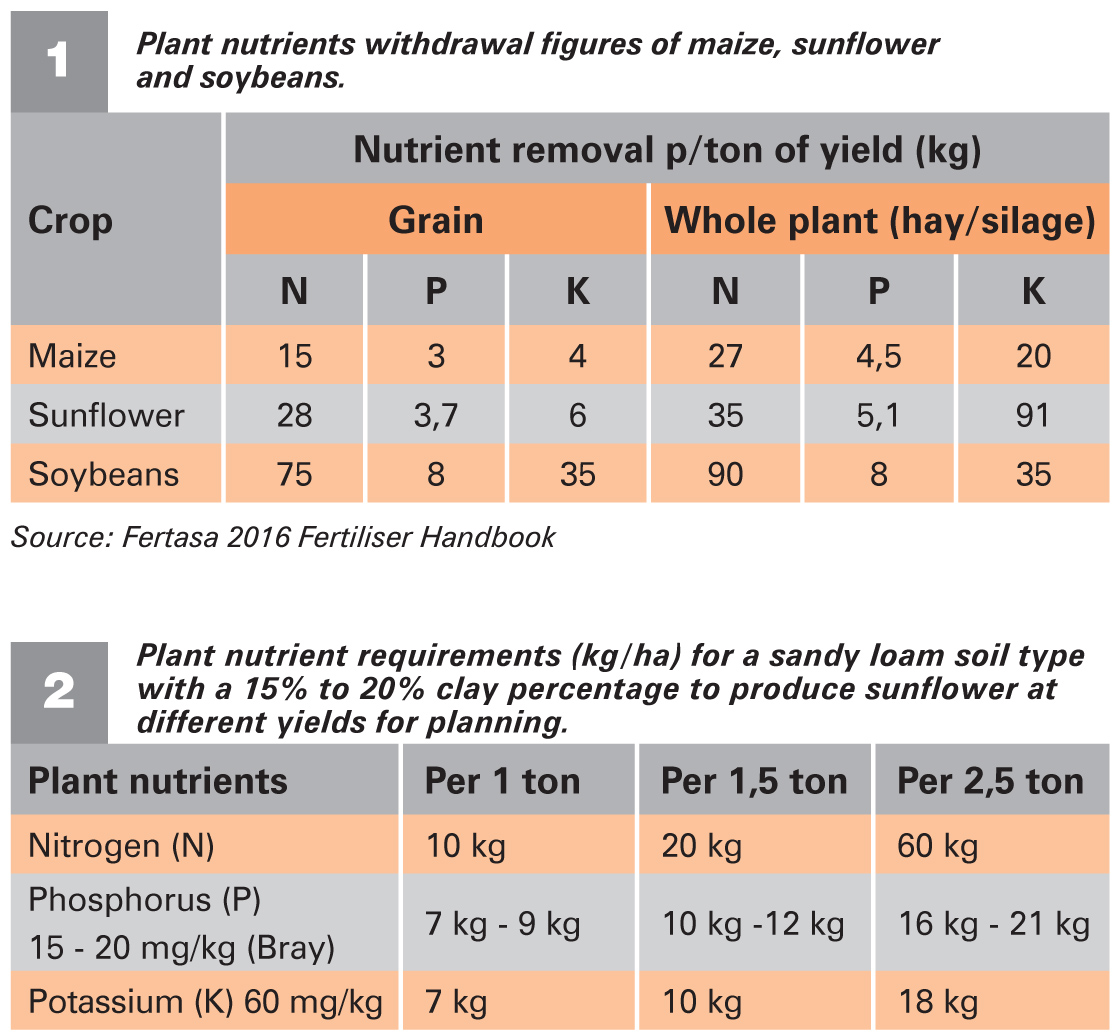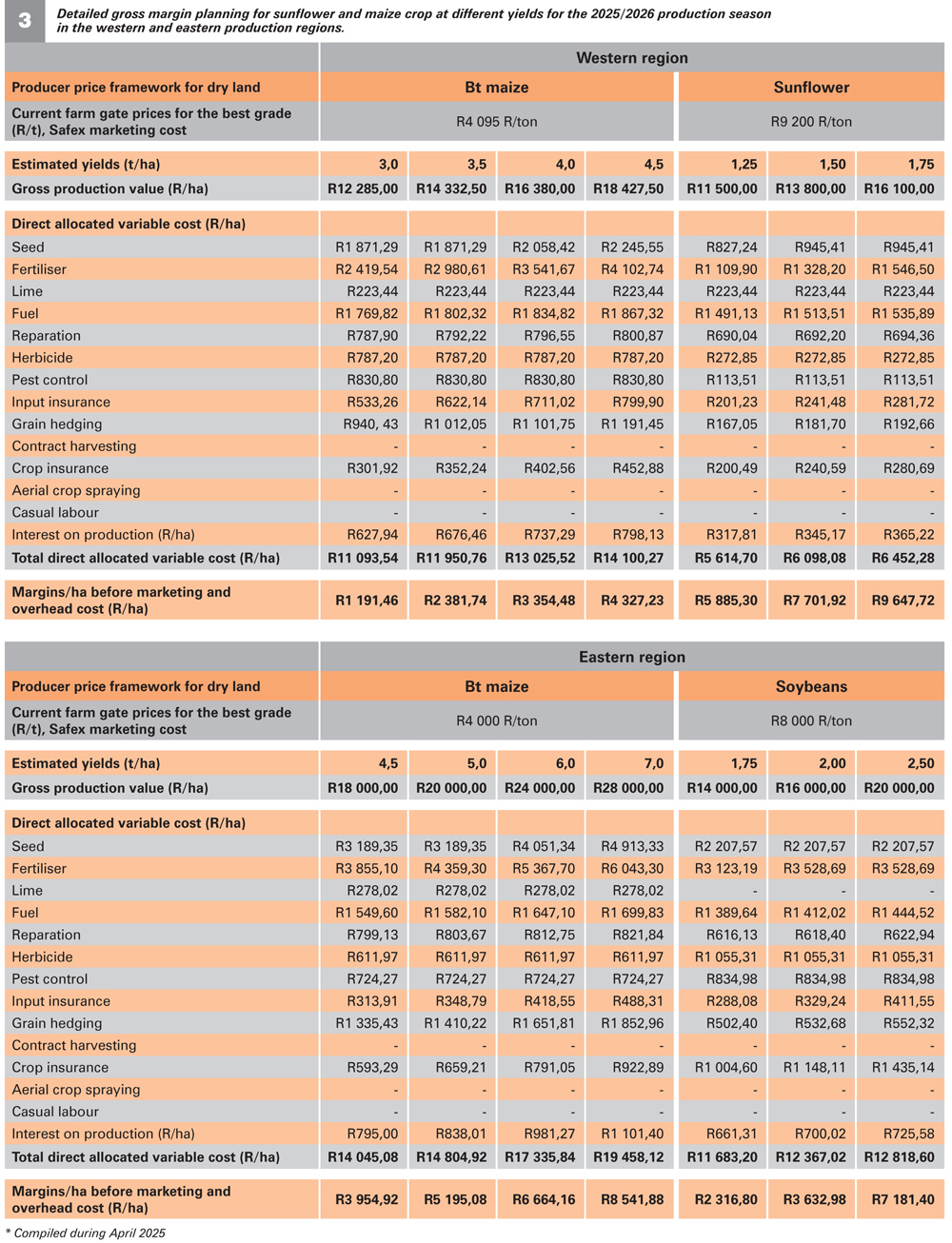June 2025
| PIETMAN BOTHA, INDEPENDENT AGRI- CULTURAL CONSULTANT |
 |
IT IS NEVER TOO EARLY TO START PLANNING THE NEXT SEASON’S CROP. IT IS IMPORTANT TO CALCULATE HOW MUCH MONEY IS NEEDED AND WHEN THE MONEY WILL BE NEEDED. THE SUNFLOWER OR SOYA PRODUCTION SYSTEM FOLLOWED WILL DETERMINE WHICH INPUTS ARE NEEDED, AS WELL AS THE AMOUNTS NEEDED.
Planning for the next season must start with the potential of the different fields, including the current year’s production practices that worked and those that did not work well. Each field must be planned according to the crop, the potential and what was previously planted on the field. Include herbicide restrictions in the planning to prevent disappointment. Remember to incorporate crop rotation effects – for example, higher maize yields following soybeans.
Production funds for the next production year must be available during July this year. Funds should be available for soil sampling, soil correction and winter weed control, and then all other costs will be needed in time. It is important to understand that soil correction will have an effect on the next crop’s production. Make sure that when lime is applied, it will not have a negative effect on the upcoming crop.
THE COST OF INPUTS
There are norms to calculate the cost of the inputs needed.
Seed: The seed costs for sunflower and soybeans are easy to determine.
Fertiliser: The fertiliser cost is more difficult to calculate, but it is possible. The Fertiliser Association of Southern Africa (Fertasa) publishes the fertiliser withdrawal figures per crop on a regular basis. See Table 1 for the nutrient removal of various crops.
The plant nutrient requirements (kg/ha) for sunflowers on a sandy, loam soil type with a 15% to 20% clay percentage are shown in
Table 2. With this information, consult your fertiliser representative and calculate the fertiliser needed and the costs. The latest soil sample data will also help a lot to ensure that fairly accurate calculations can be done.
Herbicide and pesticide: Your herbicide and pesticide programme will differ according to the type of sunflowers or soybeans planted. If a Clearfield Plus cultivar is planted, the programme will differ from a standard cultivar. Once the cultivar to plant is selected, let your herbicide representative visit your field and use his knowledge to decide on the herbicide and pesticide programme.
With their help, you will be able to get a good indication of what the herbicide and pesticide programme will cost. Whatever the crop, the herbicide programme must prevent the germination of weeds, as weeds will negatively impact your yield.
Diesel and repair work: The diesel and repair work can also be fairly accurately calculated. As a rule of thumb for conventional production practices, 75 litres of diesel will be used. (If you have your own diesel consumption figures, use it.) Use the current fuel price, and you will be close to the actual cost. There is always a connection between the diesel cost and the repair and maintenance cost. If you add an extra 10% to your fuel cost, it should be close to the repairs and maintenance costs needed. Other costs such as hedging, contract work insurance and additional costs must also be included.

CROP GROSS MARGIN
The difference between the income and direct allocatable costs is the crop gross margin. The top part of Table 3 shows the expected gross margin for the sunflower and maize crop budgets at different yields for the western production regions. The bottom half of
Table 3 gives the expected gross margin for the soybeans and maize crop budgets at different yields for the eastern production regions.
Table 3 gives a summary of the most direct allocatable costs. Farmers can use this as an example to calculate their maize, soybeans and sunflower costs and gross margins for the crops. Remember, if the gross margin is negative, it’s most unlikely that the crop will be profitable. Review the costs and make some adjustments.
For more information or help, contact your local Grain SA representative, agricultural economist, Marguerite Pienaar at marguerite@grainsa.co.za or Pietman Botha at pietmanbotha@gmail.com.

Publication: June 2025
Section: Pula/Imvula